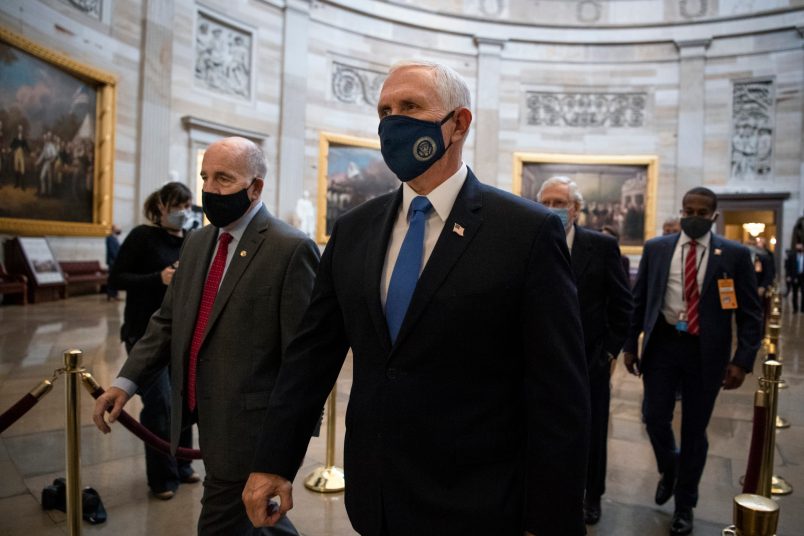One of the still-murky aspects of Jan. 6 and its preparation has to do with the effort to pressure Mike Pence into unilaterally throwing out elector slates from states that Trump lost.
A newly released memo, unveiled by the Jan. 6 Committee last week in a lawsuit against John Eastman, adds more detail to what Trump’s legal team had in mind for Pence.
The memo comes in the form of a Dec. 13, 2020 email — flagged by Politico — from attorney Kenneth Chesebro to Rudy Giuliani.
Chesebro told Giuliani in the message that he was sending “some quick notes on strategy” along after he had lost a more extensive memo “due to a reboot on the hotel computer.”
What follows is a multi-page plan for how Pence was to conduct himself before Jan. 6 and on the day of, and what the consequences of the plan for Pence may have been. Even if the effort failed to install Trump for a second term, Chesebro wrote, “much will still have been accomplished in riveting public attention on election abuses, and building momentum to prevent similar abuses in the future.”
Chesebro, an appellate attorney with a Harvard Law pedigree, reportedly joined the Trump legal team in November 2020, after sending memos to attorneys working to subvert the election which advocated for the use of “alternate electors.”
Per the plan, swing states that Biden won were supposed to submit pro-Trump electors — a key part of a broader plan to subvert the election results by presenting Pence on Jan. 6 with a supposed choice between competing interpretations of who swing states selected for president.
By submitting those alternate slates of electors, Chesebro wrote, states would give whoever was in charge of the process the authority not only to “open” and “count” the electoral votes, but to “mak[e] judgments about what to do if there are conflicting votes.”
From there, key Senate Republicans were supposed to hold high-profile hearings from Jan. 3 to Jan. 5 about allegations of “widespread violations of law” in the election. Chesebro referenced one hearing scheduled by Sen. Ron Johnson (R-WI) during that week.
On Jan. 6 itself, Pence was to immediately announce that, as a candidate running for office, he had a “conflict of interest” and thereby recuse himself from counting the votes. The responsibility for counting the votes would then fall to the president pro tempore of the Senate — at that time, Sen. Chuck Grassley (R-IA).
The fantasy would then go like this, Chesebro wrote:
“He then opens the two envelopes from Arizona, and announced that he cannot and will not, at least as of that date, count any electoral votes from Arizona because there are two slates of votes, and it is clear that the Arizona courts did not give a full and fair opportunity for review of election irregularities, in violation of due process.”
The same process would play out for other contested swing states that Trump lost.
Grassley, on Jan. 5, briefly stoked confusion by announcing that he, and not Pence, would count the Electoral College votes in the election. It’s not clear if that episode was related to Chesebro’s plan.
Chesebro is ambiguous on what would happen after Jan. 6. He recognized in the memo that the plan would stoke chaos, writing that the Supreme Court would likely need to find a way to “bring an end to a huge political crisis.” Chesebro is silent on who created that “huge political crisis,” but dresses up much of the argument in appeals to constitutional originalism, asserting that this is all in line with the Framer’s intent and, specifically, their “emphasis on honorable behavior and circumspection.”
But apart from recognizing that the Supreme Court would likely have to step in to resolve the ensuing crisis, Chesebro wrote that any outcome would essentially be acceptable.
“In terms of Republicans having leverage on Jan. 6 to force closer reexamination of what happened in this election, a defensible interpretation may be all that’s needed, because the Supreme Court might decline to reverse, based on the ‘political question’ doctrine, and even if did reverse, that would come only after a number of additional days of delay which itself would ensure closer attention to the voluminous evidence of electoral abuses,” he wrote.
Read the memo here:



